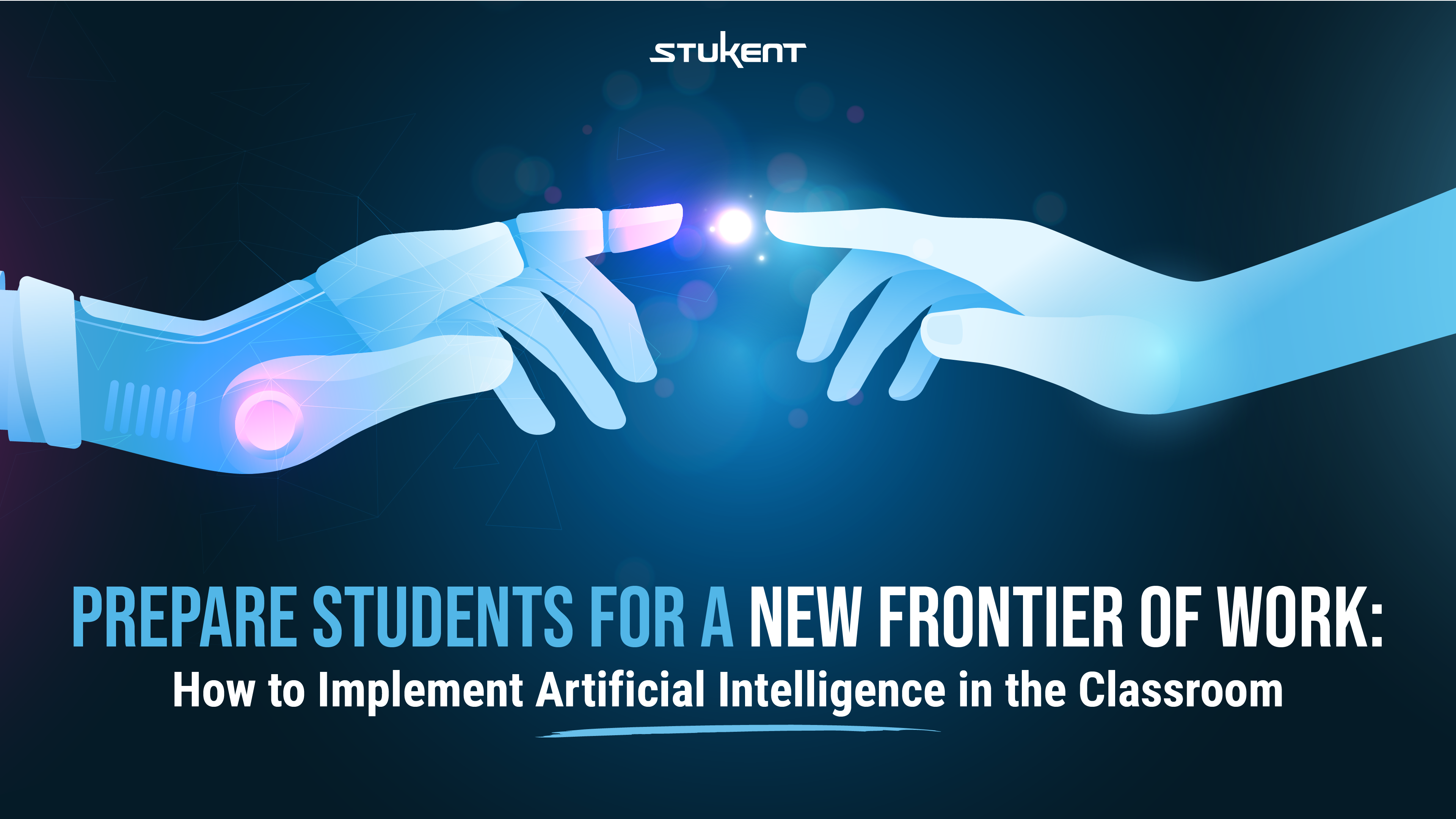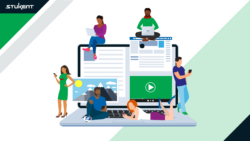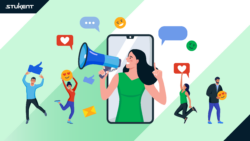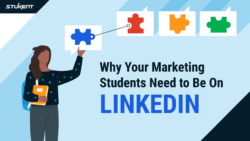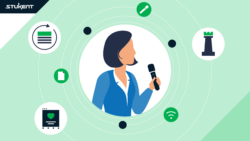AI is transforming the way we live, work, and interact with one another, potentially leading to disruptions in many professional fields. To prepare students to work alongside the AI systems of tomorrow, educators need to introduce AI concepts in the classroom today. Students who understand AI will be better prepared to weather the changes in industries such as marketing, business, accounting, communications, and beyond.
According to a recent survey from Resume Builder, half of all companies in the U.S. are already using ChatGPT in some form. “Companies are already expecting candidates to have experience with ChatGPT,” says Stacie Haller, Chief Career Advisor at Resume Builder. “As seen throughout history, as technology evolves, workers’ skills need to evolve and change as well.”
So, how can you implement AI into your curriculum in an engaging, meaningful way? Read on to learn more about how you and your students can use AI in the classroom!
Start Now
As they say, there’s no time like the present. At the time of writing this article, nearly 40% of U.S. college students say they haven’t heard of ChatGPT, which means that nearly half of students may not be aware of the systems that may transform or threaten their careers.
While AI systems (and the ways we use them) will continue to evolve rapidly over the next few years, you can get students started with the tools that are already available. ChatGPT, a chatbot that interacts with users in a conversational way, is an easy, user-friendly place to start. It’s an emergent, yet powerful tool that can help reluctant writers do more than stare at a blank page.
For example, marketing students can use ChatGPT as a starting point for web copy or blog posts. Using a tool like Google Docs’ version history, educators can track the process of students’ work, ensuring that the final product isn’t merely a copy and paste of the chatbot’s own.
Terry Sullivan, author of Stukent’s “Marketing Management Today” courseware, has created a great turnkey assignment for ChatGPT that you can use in your classroom. Not only will it get students started with ChatGPT, but it will also ask them to consider the implications of the system, too, helping to bolster their ability to think critically about AI and its role in the workplace.
There’s a wealth of AI tools to explore, with tons of applications for any classroom modality:
- Scribe allows students to create product tutorials in seconds;
- ChatSonic is a ChatGPT alternative with fewer limitations;
- MidJourney creates captivating images in seconds;
- LeiaPix Converter generates 3D Lightfield images from 2D sources;
- Murf.AI creates high-quality voiceovers from text;
- Stockimg.ai creates illustrations and designs;
- Runway provides AI-assisted photo and video editing;
- And TLDRthis can summarize any document in one click.
With so many tools, the possibilities for great classroom activities are endless; however, AI systems do have limitations and ethical issues to consider.
Emphasize Ethics and Critical Thinking
If you choose to implement AI into your course, it’s important to note that ChatGPT and other AI tools are experimental and controversial. These systems are prone to bias, factual errors, “hallucinations,” limited context windows, and other issues. Furthermore, AI systems are trained on work from living artists, writers, actors, photographers, and other creatives, which means these systems may face copyright infringement lawsuits and legislation in the future.
For now, emphasize that AI systems are fallible: “Researchers have warned that large language models carry heightened ethical risks and can spew or even intensify toxic, hateful speech,” Khari Johnson writes in Wired. “These models are also predisposed to making things up.” For example, errors in ChatGPT’s large language models (LLMs) made Microsoft Bing claim that running was invented in 1784 by a man named Thomas Running, which is factually not true.
These days, you really can’t believe everything you read on the internet — it may be something an AI dreamt up!
Today’s students need to understand not only how AI tools work, but also how they fail. Hands-on experience will prepare students to not only work alongside AI, but to manage and compensate for its limitations. To succeed in their future careers, students need to understand how AI algorithms work, help their systems avoid bias, and understand the ethical considerations of AI.
For example, AI algorithms are only as objective as the data they are trained on. If the data is faulty or incomplete, the algorithm may be compromised and discriminate against marginalized groups or communities. This phenomenon is known as machine learning bias or artificial intelligence bias, which refers to algorithms’ tendency to reflect human biases and exacerbate issues in flawed data. “If we train the data on a model that does not match environmental data well, accuracy will not translate into the real world,” says Codeacademy.
AI algorithms can be very complex and difficult to understand, even for experts in the field. We can’t always explain how AI generates its output, which is a conundrum known as the “black box” effect. ‘“Black box’ is shorthand for models that are sufficiently complex that they are not straightforwardly interpretable to humans,” writes Jeremy Petch for the Canadian Journal of Cardiology. “Lack of interpretability in predictive models can undermine trust in those models, especially in health care, in which so many decisions are — literally — life and death issues.”
There’s another caveat to AI, too, but this one’s a positive for students — companies cannot expect to replace workers with AI systems anytime soon. In a recent tweet, OpenAI CEO Sam Altman advocated for caution when using these systems: “It’s a mistake to [rely on ChatGPT] for anything important right now,” he says. “It’s a preview of progress; we have lots of work to do on robustness and truthfulness.”
Whether that progress is two, five, or 10 years down the road, it behooves students to embrace AI technology while they’re still in the classroom. While not all usages of AI will result in life-or-death situations, these systems must be treated and trained with care. The more hands-on experience students have with AI, the better prepared they will be to survive and thrive.
Provide Hands-on Experience
Experiential learning is lasting learning. By bringing AI-based assignments into your classroom, you can start students on the pathway to engaging with AI in an ethical, safe, and productive way.
We’ve included a few turnkey AI assignments that you can use in your classroom today, such as a public speaking assignment that makes use of tools like Yoodli or Orai; a logistics and transportation assignment where students discuss the challenges of implementing artificial intelligence into operations; an advertising assignment that challenges students to test their creative skills against an AI; a marketing analytics assignment and lesson plan to introduce students to the concept and application of AI; and a business communication assignment that asks students to analyze their resumes using ChatGPT.
As you prepare students to stay current with the latest AI trends and technologies, Stukent will be here to help. For more information on how to incorporate AI into the classroom, check out Stukent author Nick Mattar’s webinar, “How AI, ChatGPT, & Modern Tech Have Disrupted the Landscape of Higher Education,” on demand. We’re here to be your partner in creating effective learning experiences for your students; and we will continue to develop great materials to help you bring AI into your classroom.
At Stukent, we’re here to help educators help students help the world. To learn more about our revolutionary courseware and Simternships, or to get FREE instructor access to our products, visit our website.
